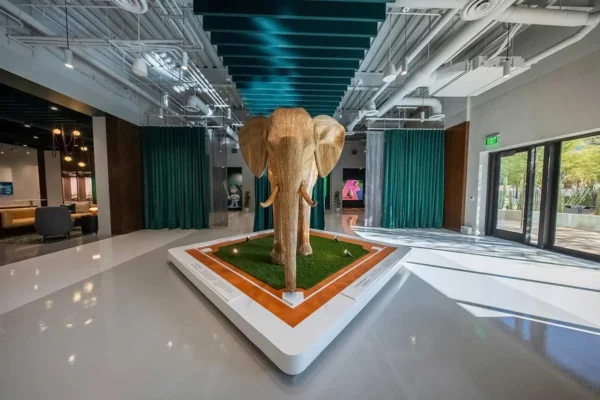by Candy Adams, CTSM, CEM, CMP, CMM (a.k.a. “The Booth Mom”®)
 Working in the tradeshow and events industry, one of the rules of any event is to have a “Plan B” when something doesn’t go as planned.
Working in the tradeshow and events industry, one of the rules of any event is to have a “Plan B” when something doesn’t go as planned.
When COVID-19 pulled the rug out from under events in March, we were told to expect 15 days of shutdown to flatten the curve. Now that we’ve passed 150 days—ten times what we originally expected—I feel like I’m running out of letters of the alphabet and already past “Plan X”!
I spend hours every day reading about our industry and the pandemic, and although I don’t have a crystal ball, I do feel the pulse of the issues facing us in getting our shows back on the road.
But the more I read and learn, it just makes me ask more questions and dig deeper on these topics of what is—and isn’t—factual on where we stand today, what issues we can—and can’t—control, and what F2F shows and events might look like moving forward.
Industry Confidence on Reopening Live Events: Recent industry surveys state confidence in reopening dropped by about 10 percent after the July resurgence of reported cases. Trying to stay abreast of ever-changing numbers of tests, infections, hospitalizations, recoveries and deaths, medical opinions and government mandates—well, it’s like shooting at a moving target. Timing estimates for when large mass gatherings might happen currently vary from Q2 2021 through 2022 to be fully back to “normal.”
Issues: Every state/city/county is making its own rules, and show managers don’t know what rules on mass gatherings will be in place when the date of their live show arrives. Convention centers—at the crux of reopening—are at the mercy of whatever governmental entity owns them, whether it’s reopening to events or repurposing to be an overflow hospital or homeless shelter.
Travel to Live Events: Employers have what is known as “duty of care” for their employees, defined as “the moral and/or legal obligation to ensure the safety or well-being of others” and not put them in harm’s way. Business travel bans during the pandemic have been put in place for all but essential travel. Through year-end, travel industry surveys indicate that about 90 percent of large employers have travel moratoriums in place, which would impact attendance at any live events that are still scheduled. What events, exactly, will cause these bans to be lifted is anyone’s guess.
Issues: Adding to the uncertainty of whether travel is safe is the availability of network transportation like Uber and Lyft, airlines, convention facilities, hotels and restaurants at our destinations. Gearing back up the entire travel industry to accommodate large groups of business travelers to shows that can’t guarantee a continuous flow of revenue will be challenging for all involved.
Sanitation and Disinfection: An entire new industry has emerged to determine how to best sanitize and disinfect our environments to avoid the risk of infection by the COVID-19 virus.
Issues: Faith has to kick in here that our travel suppliers have prioritized our best health interests. But while we are told that sanitation has taken place, do we really know what disinfection has been done—and how effective it is?
- What has our Uber driver done to sanitize his car after each ride?
- How are airports sanitizing check-in areas, restrooms, security, food concessions and gate areas?
- What are the airlines doing to facilitate touchless check-in, touchless boarding passes, fogging the interior of the plane with disinfectant between flights, serving only individually packaged food and beverages and sanitizing the restrooms between visits?
- How are hotel housekeepers disinfecting germy hotspots like door handles, remote controls, desktop surfaces, thermostats and faucet handles? Will there still be a quota system of number of rooms to “turn” during their shifts that would make them rush the cleaning process?
- Convention centers are leading the charge in facility disinfection by implementing the GBAC (Global Biorisk Advisory Council) STAR program, touted as “the cleaning industry’s only outbreak prevention, response and recovery accreditation for facilities.” These show venues are proactively implementing sanitation and disinfection procedures, but a recent industry blog pointed out that adherence to GBAC’s guidelines is voluntary.
And there’s been little mention of the additional costs of these sanitation protocols on both travel and show management costs, and how they will be absorbed or trickled down to consumers—to venues, show managers, exhibitors, attendees and staff.
Spatial Distancing. How far away is far enough? Most often we’re hearing the six-foot rule of “social distancing” that equates to 28 to 36 sq.ft., depending on whether you’re calculating space as a circle or square around you. But I prefer the term “spatial distancing” since putting us farther apart doesn’t seem “social.” What’s considered a safe distance between us will affect everything from travel, tradeshow and exhibit layouts.
- Major network transportation companies are no longer allowing front seat passengers.
- Airlines are avoiding filling center seats “when possible” and looking at boarding in smaller groups or seating those in the window seats first to avoid lines in the aisles.
- Show managers are considering how to determine optimal show floor density, potentially restricting the number of attendee registrations and the maximum number of exhibitors per booth space, moving to touchless registration onsite to avoid lines and badging attendees as to what day(s) or hours they can visit specific areas of the show floor. Expect both floor-mounted and eye-level signage to remind visitors of the show’s distancing rules.
- Tradeshow floor plan layouts are expected to grow to larger square footage, with wider one-way aisles, additional space between booths and to accommodate spatially-distanced food consumption areas (i.e. three people per table that used to seat 10) with food served in boxes or in individual packages.
Vaccine(s) or Treatment: With some venues’ reopening being contingent on the availability of vaccines for—or treatment of—COVID-19, everyone has their eye on the status of research and clinical trials of vaccines and treatments to halt the virus’ spread.
Issues: There are several gorillas in the room when talking about the possibility—and impact on the events industry—of a vaccine’s introduction:
Fact: There is no vaccine currently available for any of the seven strains of human coronavirus. The CDC website states, “There is no vaccine to protect you against human coronaviruses and there are no specific treatments for illnesses caused by human coronaviruses.” We’re in uncharted territory.
No one knows if or how soon a vaccine will be available, how effective and safe it will be or its cost or distribution roll-out timetable after FDA approval.
Businesses want F2F exhibits back: A recent global industry survey stated that 2/3 of global exhibiting companies have seen an adverse impact on their product’s branding and awareness since the pandemic started and tradeshows halted. Sales that have historically been driven by leads from F2F tradeshows have fallen and companies are anxious to resume exhibiting to regain that lead source.
Issues: Virtual/online events are, at best, a stopgap. Most exhibitors are reluctant to participate in virtual-only events, with only a 25-35 percent re-sign rate when offered to move their booth space investment from a live to virtual event. Virtual events are being sold as a replacement for F2F events when they are at most a band-aid that really requires a tourniquet! One colleague compared them to picking up food to go since you can’t sit in a restaurant and eat—it’s not the same but it’s better than nothing!
Although the numbers of those attending virtual events look very high, they may not what they appear. Virtual event organizers may be counting attendance differently than at F2F events, i.e., being counted as attending an entire session regardless of how long I was there or if I attended each of an event’s six virtual sessions, I might be counted as six attendees. Ask if the number of those who registered to attend is the number being reported, since according to industry estimates only 40 to 60 percent of registrants actually attend the “live” virtual event.
Obstacles to the positive transition to virtual events for exhibitors include show managers without experience in virtual events, little history of success in providing a positive ROI, the widely-varying costs to exhibit virtually and lack of interest by attendees who see the event more as a virtual educational conference than virtual exhibition having little interaction with exhibitors.
Hybrid Events: The Ultimate Answer
After the cloud of COVID-19 is in our rearview mirror, we have the sunshine of hybrid events to look forward to. These events, with both a live, F2F show floor component plus virtual/remote attendance, too, are the silver lining we can look forward to when getting together again on the show floor becomes our new reality.
Candy Adams, known throughout the exhibit industry as “The Booth Mom,” is a hands-on exhibit project manager with more than 495 shows and five industry certifications under her belt. As an accomplished veteran exhibit marketing consultant and exhibit staff “boothmanship” and exhibit management trainer, she specializes in guiding rookies and inbound international exhibitors through the tradeshow maze, assuring they maximize their return on investment while cutting exhibiting costs. A prolific award-winning writer and trainer on exhibiting best practices, she’s published more than 400 articles and blogs and trained tens of thousands of exhibit managers on all aspects of tradeshow exhibit management in her 28-year career. For more info, visit www.BoothMom.com.
This story originally appeared in the Sept./Oct. issue of Exhibit City News, p. 34. For original layout, visit https://issuu.com/exhibitcitynews/docs/ecn_sept-oct_2020





















